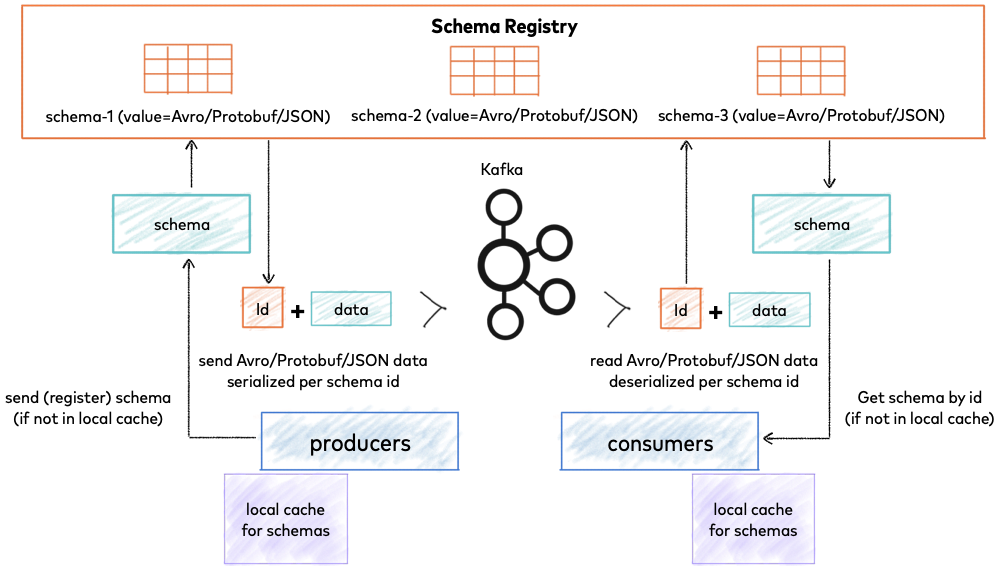A schema registry lets you store schema information in a textual format and makes that information accessible to various applications that need it to receive and send data in binary format.
A schema is referenceable as a record consisting of a subject that is the logical name of the schema, the schema version, and the schema format, which describes the binary format of the data.
The producer consults the registry to establish the correct schema ID when sending a message, and the consumer uses the registry to fetch the sender's schema.
With this solution, we try to move the schema resolution to a central service. It can remove some of the consumer versioning issues, as they will request the schema on demand from a centralized service and apply it dynamically, it can also introduce significant complexity, need for a framework, and a possible availability problem to the system.
